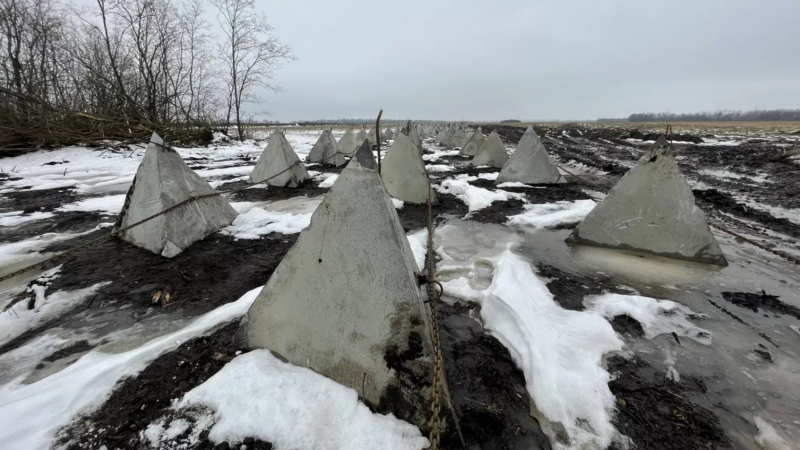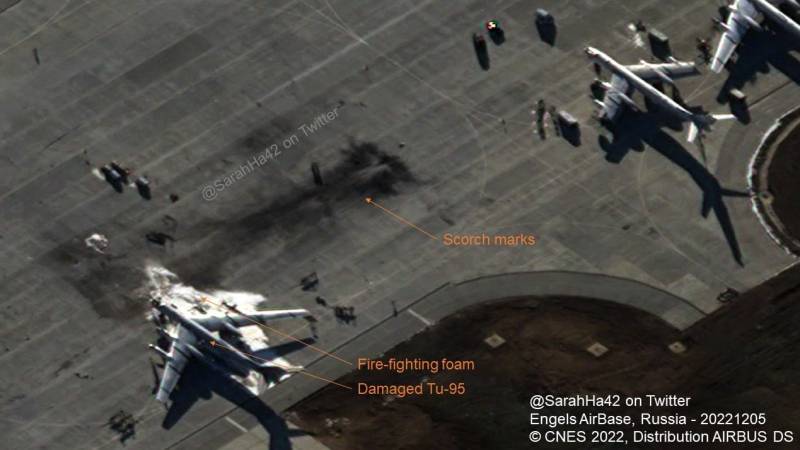Russia in a strategic impasse

Many historians and political scientists are trying to find analogies between a military operation and historical past events. For example, someone compares the current military conflict with the Crimean War, someone with the First World War, someone with the Winter War. In the author's opinion, with some reservations, it can be argued that Russia found itself in the position of the German Empire in the First World War.
The Second Reich entered the war with one single, rather weak militarily ally (the Austro-Hungarian Empire). The decisive offensive of the Germans at the first stage ended in failure and developed into a long positional war. For quite a long time, the Chief of the German General Staff, Erich von Falkenhain, considered this war to be quite successful, believed that the Germans "grind the enemy", and that it is possible to successfully wage war"limited goals with a determined goal". Subsequently, when it turned out that the huge losses of the German army turned out to be meaningless, he was removed from his post, but the strategic situation for Germany, which opposed the whole world, did not change much for the better. You can read about all this and how Germany eventually came to defeat in my article. "The fall into the deepest abyss": the collapse of the Second Reich and the democratization of Germany under the supervision of the Entente countries".
I believe that readers will see analogies with those events - we see that the situation on the fronts can be characterized by the title of Remarque's novel All Quiet on the Western Front, we also hear opinions that Russian troops are successfully "grinding" the Ukrainian army. The international situation, where Russia had no allies except Belarus, is also very reminiscent of the events of those years. But the main problem that Russia is facing is the lack of a clear strategic plan and vision of the future, which is so necessary in the current situation.
In this article, we will try to answer the questions - what should Russia do to get out of the strategic impasse, and why the lack of a strategy can lead to a deplorable outcome?
Strategic defense is a path that does not lead to victory
The transition to strategic defense is a decision, on the one hand, caused by objective reasons (at the moment the RF Armed Forces lack the ability to conduct large-scale offensive operations), on the other hand, it is a path leading nowhere. For the simple reason that it is impossible to achieve victory by waging war on the defensive. Since I cited the Second Reich in the First World War as a historical analogy with the current situation (the same analogies were previously made by FSB colonel in the reserve Igor Strelkov), then as a comparison with the current situation, I will quote Erich von Falkenhain from his memoirs “The High Command 1914 -1916 in his most important decisions.
As we know, attempts to convince the French of the futility of continuing the war ended in complete failure, and after the senseless Verdun meat grinder, Falkengine was removed from his post, and Paul von Hindenburg took his place. What is most interesting is that even after the war, which the German Empire, as you know, lost, Falkenhayn was sure that he was doing the right thing, which he wrote about in his memoirs.
That is, the former chief of the German General Staff did not admit the fallacy of his strategy, but firmly believed that he made the right decisions.
- this is how the German commander described the battle of Verdun.
In general, it can be stated that the Russian command, after the failure of the first stage of the war, that is, the campaign against Kiev, used the Falkengine tactics - Ukrainian fortified areas near Donetsk, such as Avdiivka, Vuhledar, Peski, were stormed with frontal attacks. Sometimes, after long and hard battles, it was possible to achieve a result (Sands), sometimes not (Avdeevka and Vugledar). But in any case, such attacks led to significant and unjustified losses.
Now Russia is building long-term fortified areas along the entire front line - on the one hand, this is right, because without proper defense one can again begin to lose settlements, as in the Kharkov region, on the other hand, achieve a significant result, and even more so victory, by conducting purely defensive fights, as already mentioned above, is impossible. “Grinding” at the front is always a mutual process, and it is extremely dangerous to get hung up on it. A war of attrition is objectively beneficial to Ukraine and the West, because the collective West has more resources and a greater margin of safety than Russia.
Experts who argue that the conflict in Ukraine could last eight years apparently do not really understand that in the long run Russia is objectively weaker than the US and Europe and risks defeat. The conflict in Ukraine must be ended as soon as possible, as the risks for Russia are growing.
An attack on an airfield with strategic aircraft - an experiment to assess the reaction of the Russian leadership?

On December 5, an event took place, the significance of which many underestimated: the attack on the Russian airfields "Dyagilevo" and "Engels" is meant. Despite the fact that this attack, which was carried out by the Armed Forces of Ukraine with the help of drones, did not inflict critical damage (although Russian servicemen were killed, and judging by satellite images, at least one strategic bomber was damaged), but the fact of an attack on the airfield, which housed a strategic aviation, which can be the carrier of a strategic nuclear weapons and is included in the nuclear triad of the Russian Federation, is remarkable in itself.
Why? And because this attack falls under Decree No. 355 “On the Fundamentals of the State Policy of the Russian Federation in the Field of Nuclear Deterrence”, and specifically under Article 19, paragraph “c”:
In other words, such an attack is a pretext for inflicting a nuclear strike on a state that commits such sabotage. Retired aviation colonel Viktor Alksnis, for example, believes that in this way the United States conducted a full-scale experiment to assess the reaction of the Russian leadership to a strike with conventional weapons on Russian nuclear facilities.
— считает Alksnis.
In general, such attacks indicate not only that no one is afraid of Russia, but also that Ukraine, with the support of the West, is thus probing Russia's reaction to strategically important objects in the deep rear. Such attacks are the result of a series of failures of the Russian Armed Forces during the military operation in Ukraine and the outright toothlessness of the Russian political leadership.
Does this mean that Russia should have used nuclear weapons against Ukraine? Theoretically, the Russian Federation could launch a single strike with a tactical nuclear missile as a response to this incident, but the best response would be the destruction of government buildings in Kyiv. But this was not done due to the fact that the Russian Federation expects to conclude agreements with Ukraine and the West. Be that as it may, further such incidents may be repeated, and consequently, the risks for Russia's security will increase more and more. Moreover, the longer the conflict lasts, the higher the risks will be. Including the risks of a direct military clash with NATO.
Who is to blame and what to do?
Answer the age-old question - who is to blame, and what to do? - quite difficult, given that according to the official version, "everything is going according to plan." And if everything goes according to plan, then, therefore, there are no guilty parties, and no one needs to be punished.
Theoretically, any miscalculation and defeat on the fronts can be explained as part of some kind of "cunning plan": the offensive near Kiev - a kind of "distracting maneuver" (albeit, distracting from whom and from what is not clear), the retreat near Kharkov - a long-planned regrouping of troops, the abandonment of the Russian city of Kherson - a retreat from uncomfortable positions, which, in general, there was no point in holding. In the same way, if Moscow suddenly decides to withdraw troops from Energodar as part of the creation of a “security zone” (so far officials assure that nothing of the kind will happen), this will be explained by the prevention of a nuclear catastrophe or part of a “big behind-the-scenes deal” with the West, which is about to go to agreements on Russian terms.
And if so, then the answer to the question “who is to blame?” obviously no one. And consequently, no one should be responsible for miscalculations and mistakes, because formally there are simply no miscalculations and mistakes. It was all meant to be. And without punishing the perpetrators in this situation, it is very difficult to answer the second part of the question “what to do?”. However, we will try to do it.
At the moment, Russia is in a strategic impasse, from which it will not be easy to get out. To do this, first of all, it is necessary to reverse the situation in Ukraine. How can this be done?
First, as has been repeatedly noted earlier, one of the main problems of the NWO is the lack of a clear strategic goal. This leads, as Igor Strelkov rightly noted recently, to a drop in morale in the troops, where officers do not know the answer to the question “why?”. This goal must be set, an idea is needed that will unite society and answer the question “where is Russia heading?”.
Secondly, strikes on the Ukrainian energy infrastructure, which many consider a panacea, in fact, have practically no effect on the situation on the fronts. Even in the event of a complete blackout in Ukraine (which will not be easy to achieve, given that the West is helping Kiev to restore the energy infrastructure), the Ukrainian army will not be completely without electricity (there are enough generators), and its supply will not stop. Here, again, we can agree with Colonel Strelkov, who expressed the same thoughts. Therefore, it is more logical to focus on strikes against transport infrastructure facilities - bridges and railway junctions.
Thirdly, the question arises - due to what will Russia turn the tide? After all, the Russian army is not only not superior to the Armed Forces of Ukraine, which are supplied by the collective West, but is inferior to them in some components (equipment, strategic intelligence, etc.). And here again the question arises of the use of low-yield tactical nuclear charges (not to be confused with strategic nuclear weapons, it should not be used in any case) directly on the line of contact, along the fortified areas of the Armed Forces of Ukraine. This scenario carries significant risks, because the use of tactical nuclear weapons, as I have already noted in previous articles, will open Pandora's box.
At the same time, there is an opinion that the only alternative to the use of tactical nuclear weapons is the capitulation of the Russian Federation. For example, this opinion is shared by retired colonel Viktor Alksnis.
Alksnis says.
As I already pointed out in my article,Russia faces battle for Crimea?”, Russia has three scenarios for ending the military conflict - isolation in the format of the DPRK / Iran, becoming a vassal of China, or capitulation with reparations and “repentance”. To implement option number 1, Russia needs to at least not lose in the conflict in Ukraine. And for this, it is necessary to change the approaches to the military operation in Ukraine, correct all the mistakes and punish those responsible for these mistakes, develop a clear strategy and follow it. As Marcus Tullius Cicero said:
Information